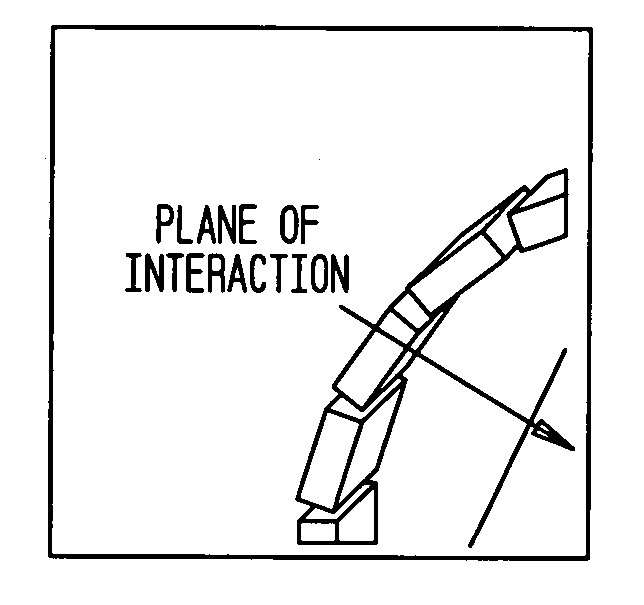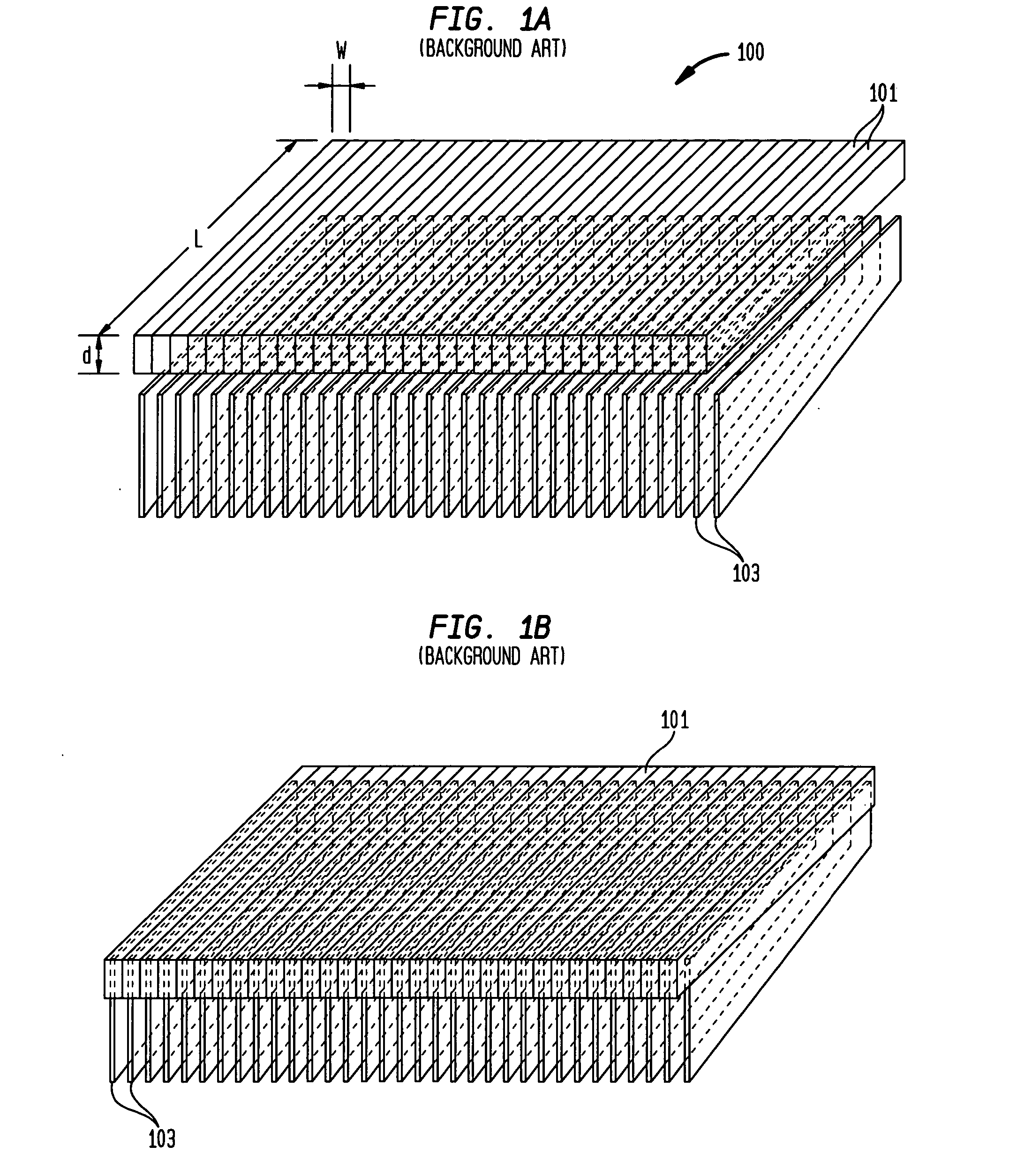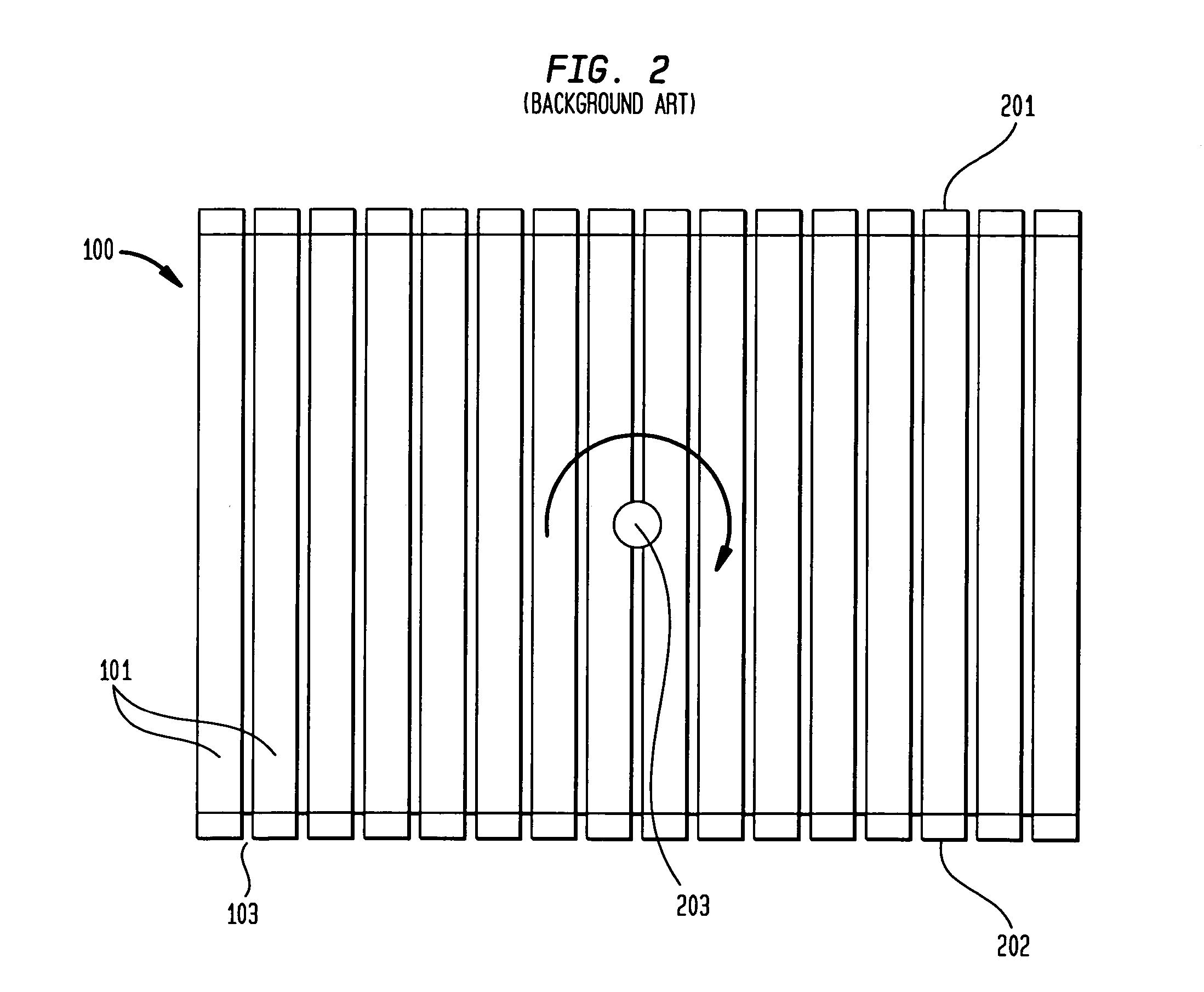Nuclear imaging system using rotating scintillation bar detectors with slat collimation and method for imaging using the same
a technology of scintillation bar and detector, which is applied in the field of nuclear medicine, can solve the problems of insufficient performance of bar detectors as designed in the prior art for use in medical imaging applications, inability to detect for use, and relatively low sampling capability of such scintillation crystals, etc., and achieve the effect of maximizing geometric efficiency
- Summary
- Abstract
- Description
- Claims
- Application Information
AI Technical Summary
Benefits of technology
Problems solved by technology
Method used
Image
Examples
Embodiment Construction
[0037]FIG. 4 shows the basic components of detector modules (i.e., a photosensor, collimator slats and a bar scintillator) and their assembled structures according to the present invention. Two different module types are proposed based on the coupling location of the photosensors on the bar scintillator. The type I module has a photosensor located at the middle-bottom of the scintillator, while the type II module has two photosensors, one mounted on each end. The type I and type II modules each have pros and cons in terms of electronic processing requirements, cost and performance characteristics.
[0038] In order to maximize light collection efficiency (LCE), each individual bar scintillator preferably is polished and wrapped with reflective materials such as MgO, TiO2 or Teflon®, except for the area where the photosensor is coupled. The bar scintillator then is embedded between two elongated slats made from thin film tungsten or lead. This configuration prevents intercrystal scatte...
PUM
 Login to View More
Login to View More Abstract
Description
Claims
Application Information
 Login to View More
Login to View More - R&D
- Intellectual Property
- Life Sciences
- Materials
- Tech Scout
- Unparalleled Data Quality
- Higher Quality Content
- 60% Fewer Hallucinations
Browse by: Latest US Patents, China's latest patents, Technical Efficacy Thesaurus, Application Domain, Technology Topic, Popular Technical Reports.
© 2025 PatSnap. All rights reserved.Legal|Privacy policy|Modern Slavery Act Transparency Statement|Sitemap|About US| Contact US: help@patsnap.com



